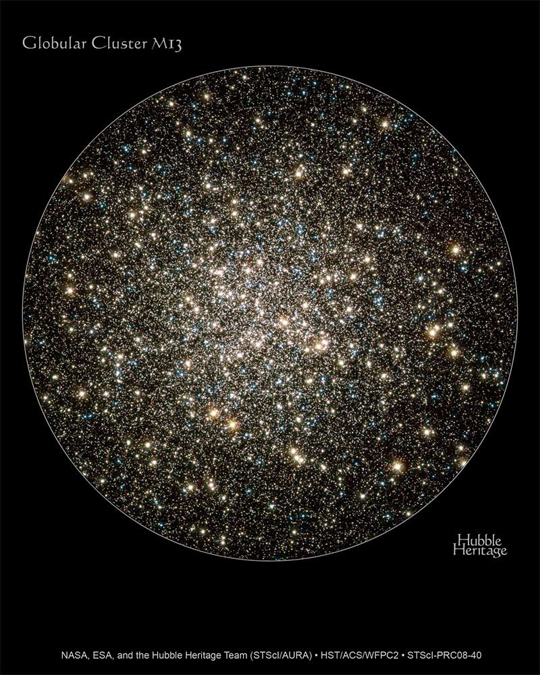Author Archive
 Comet Lulin
Comet Lulin
Short for now – more to be added later.
I saw Comet Lulin last night – FROM SEATTLE – through a break in the clouds. I observed for about 30-45 minutes, and did some hand-observations:
Here are some links if you want to learn more or see it yourself:
Video of it moving across the sky:
http://www.astrophotoinsight.com/node/1625
The most detailed picture I’ve seen so far:
http://bf-astro.com/cometLulin.htm
And the prettiest picture I’ve seen so far:
http://www.astropix.com/HTML/SHOW_DIG/094.HTM
A good article from this year with some background on its discovery 2
years ago:
http://www.universetoday.com/2009/01/14/comet-lulin-is-on-the-way/
A more recent article that mentions the new discovery about the
structure of the tail:
http://www.universetoday.com/2009/02/01/comet-c2007-n3-lulin-a-twist-in-the-tail/
Observation reports and charts:
http://www.skyandtelescope.com/observing/highlights/35992534.html
 March is Imminent!
March is Imminent!
March is more-or-less here, and before I get to the upcoming constellations, I wanted to bring a few awesome stargazing opportunities to your attention!
This year is the International Year of Astronomy – and the 400th Anniversary of Galileo’s observations of Jupiter. Celebrate by doing some stargazing of your own. Here are just a few upcoming easy worldwide stargazing projects you can participate in!
March 16-28, 2009 – GLOBE at Night
Go outside any one of the above dates and take a look at Orion – no telescope or binoculars needed. GLOBE at Night wants to know how many stars you can see with just your eyes. But wait! They make it easy – you don’t have to count the stars – just compare what you see to diagrams, and pick the one that matches and submit your observations online. This data will be compiled into maps which will help astronomers track light pollution and how stargazing quality in various parts of the world.
Go to their webpage, download an observation packet, and take your family out to your backyard for some real science!
You’ll need to know your latitude and longitude:
Seattle is at: 47o37’N, 122o20’W
8:30pm Saturday, March 28, 2009 – Earth Hour
All you have to do for Earth Hour is turn off your lights – especially your outdoor lights for one hour at 8:30pm on March 28th. It’s that easy. And you might as well take that time to head outside and do your Orion observing for the GLOBE at Night project we just talked about! Earth Hour is about energy conservation and doing something about climate change – with the added benefit of supporting Dark Skies Awareness and making stargazing awesome even in big cities.
You can sign up and get more information, or just turn off your lights. Tell a friend; ask your neighborhood businesses to participate. Anything you do helps.
April 2-5, 2009 – 100 Hours of Astronomy
One of the cornerstone goals of the International Year of Astronomy is to get as many people in the world to look up at the sky, and to look through a telescope as possible. To work toward this this there’s going to be a 100-hour-long extravaganza of worldwide observing events. Here at Pacific Science Center we’ll be having our Earth Observation from Space month (all of April) where you can meet scientists and participate in hands-on activities on six designated research days.
Don’t have a telescope to do your own observing? No problem – join the 100 Hours of Astronomy team for a 24-hour webcast from research observatories around the world.
Be warned, when you visit their website – they write dates in the European style, so what we would call 04/01/2009, they’ll write as 01/04/2009! Shows you just how worldwide this project is!
And Now for the Constellations and Observables in the March-April Sky:
Notable Sky Objects
VENUS
I know, I said exactly this last month, but it’s still true! It may not be on my map, because the map is for later in the evening, but Venus is spectacular low in the southwest just after sunset. If you’ve got clear enough skies, poke your head out and learn why Venus has earned the moniker “the evening star.” (In June you’ll be able to poke your head out early in the morning and learn why Venus ALSO earned the moniker “the morning star.”) Venus will ONLY be visible for the month of March – by April it will be too close to the Sun from our point of view.
SATURN
Oh Saturn – with its rings tilted almost edge on to us, you really shouldn’t miss it. It’s beautiful, and with a little telescope you’ll at least be able to see its bright moon Titan, or the sliver of the rings running around the planet.
COMET LULIN
It’s not on my map because it’s moving too fast. Start by looking up some maps on Sky and Telescope, or somewhere like that, then gaze towards Saturn with a pair of binoculars. I know I’ve told you before that comets don’t streak across the sky – but this one is moving fast enough that you can notice the motion in just a short observation time. (It won’t look like it’s moving, but you’ll notice its position in relation to the background stars changes slightly over time). Once again, it won’t streak – if you see that it’s a meteor or an airplane. Moving a little slower? That’s a satellite. A dim smudge that doesn’t seem to move? That’s probably the comet, but don’t get it confused with M13, the Hercules Globular Cluster.
Watch for a full-serving AstroInfo on Comet Lulin coming up later this week!
New Constellations
BOÖTES – The Herdsman
SCIENCE: Arc to Arcturus, Speed on To Spica. This is how you find Boötes using the curve of the handle of the Big Dipper – and then that leads you on to Spica in Virgo!
Tau Boötes (sorta Boötes’ left foot) has an extrasolar planet! One of the so-called hot Jupiters. You can see this star just to the right of Arcturus – it’s the crook (corner) star off the little triangle that you’ll see there.
MYTH: The modern myth is that Boötes invented the plow, and therefore farming, and he’s the only “regular person” up in the sky – everyone else is a God, or partially Godlike, or something. I love this myth, because I can explain that Boötes is why we have cell phones and planetariums. It turns out that several different cultures depict Boötes as a herdsman or a farmer: the Saudi Arabians, the Egyptians (to whom the Herdsman is so important he also represents Osiris), the Greeks, and the Christians. Yowsa.
VIRGO – The Virgin (or “Princess”)
SCIENCE: Arc to Arcturus, Speed on To Spica. This is how you find Boötes using the curve of the handle of the Big Dipper – and then that leads you on to Spica in Virgo!
We are part of the Virgo Cluster of galaxies – and it’s called the Virgo Cluster because to see the rest of the galaxies in our group you look towards Virgo. There’s a bunch of beauties out there by Virgo’s face, so if you’ve got a scope, take a look, and if you don’t, look up some pretty pictures of our group of galaxies – most of them are over there.
MYTH: Worried about talking about virgins in mixed company? Well, princess is a perfectly acceptable way to talk about Virgo, also “girl” is good too. If your audience is up to it, you might mention that this virgin usually represents the Greek goddess of justice – so I wouldn’t try to cross her if I were you.
CORONA BOREALIS – The Northern Crown
SCIENCE: There’s not much too Corona Borealis, but it is a very noticeable grouping of stars, and therefore quite helpful in finding Hercules, especially in our murky Seattle skies.
MYTH: Obviously the Greek myth is about a crown, but the Housatonic Native Americans call this Ursa Major’s cave!
HERCULES – Hercules
SCIENCE: Do not miss M13 – the Hercules Globular Cluster! This is one of the oldest groups of stars in our galaxy – it’s like the old-folks home of stars.
MYTH: “Hercules is one of the oldest constellations, found in the cave drawings of primitive cultures. Not even the Greeks were sure of his origins. We are aware that very early cultures worshipped him, but who and what his starry figure stood for is a mystery.
“About 300 BC the Chaldeans said that this figure was standing victorious on the head of a twisting serpent. They associated these two figures, Hercules and Draco (the serpent) with their sun god, Ishdubar.
“The Chinese called Hercules ‘Titso’ or ‘the emperor’s seat’.” (From Zeta Strickland)
“Tiny” Guys
Going for the Gold? Here’s this month’s itty-bittys.
SERPENS – The Serpent
LYRA – The Lyre (just starting to peek up)
CORVUS – The Crow
CRATER – The Cup
COMA BERENICES – Berenice’s Hair
CANES VENATICI – The Hunting Dogs
LYNX – The Lynx
SEXTANS – The Sextant
HYDRA – The Sea Serpent (Big and dim, so big that it’s close to being biggest Northern Hemisphere constellation)
ANTILA – The Air Pump (Maybe you’ll see it, but it might be too far south)
MONOCEROS – The Unicorn
LACERTA – The Lizard
LEO MINOR – The Small Lion (Between the Big Dipper and Leo)
CAMELOPARDALIS– The Giraffe
Returning Constellations
LEO – The Lion
CANCER – The Crab
CANIS MAJOR – The Big Dog
ORION – The Hunter
TAURUS – The Bull
GEMINI – The Twins
CEPHEUS – King Cepheus
DRACO – The Dragon
URSA MAJOR – The Great Bear
URSA MINOR – The Little Bear
CASSIOPEIA – The Queen
Happy Sky Viewing!
Alice Enevoldsen
Where’d I Get My Info?
My memory, and Zeta Strickland
 Carnival of Space #91 and a Side Note
Carnival of Space #91 and a Side Note
Don’t miss this week’s Carnival of Space – hosted again by Brian at Next Big Future!
There are mentions of the recent Texas Fireball (did it really actually hit?!), a discussion of the possibility of liquid water on the legs of the Phoenix Lander, and Astroblog is rereading Galileo’s “bestseller” Starry Messenger and blogging about it as he goes through. So, get a taste for Galileo’s observations in his own words.
365 Days of Astronomy Calendar
I found this great Calendar on 365 Days of Astronomy’s Website – check it out for neat happenings in Astronomy.
Personal Note:
I had a major allergic reaction on Friday night, involving a trip to the Emergency Room. I’m fine. I have lived my entire life with extensive, severe food allergies, and it is just the way my life is. I know what to do, I carry an EpiPen. The only reason I mention this to you, is because there are some people in the world who don’t believe in the severity and danger of food allergies. I want you to know that you know someone with severe food allergies (me) – allergies that sometimes send her to the Emergency Room – so that you can continue (or learn) to be sympathetic to those around you who have these allergies.
This is my chosen non-astronomy cause. Just like Phil Plait fights the antivaxxers, I will confront the food allergy non-believers. You have been warned – this may come up from time to time on this blog, though I’ll try to keep it to a side issue.
For more information on food allergies, visit:
The Food Allergy and Anaphylaxis Network
National Institutes of Health – Medline Plus Medical Encyclopedia
 Carnival of Love! …. I mean, Space!
Carnival of Love! …. I mean, Space!
Gentle Reader,
We’re featured in the latest Carnival of Space (#90?) over at 21st Century Waves!
Also, I’m slow, so check out CoS #89 (The Moon Society Blog), CoS #88 (The Spacewriter’s Ramblings), and CoS #87 (The Martian Chronicles!).
Please stop by if you want a dose of Space news – there’s plenty out there – and you might find a new blog to add to your RSS reader!
~Alice!
 Bright Stars Tonight
Bright Stars Tonight
So you took a walk last night and you saw two beautiful bright stars. It was the planet Venus and the bright star Sirius, but look out – don’t miss cute little Saturn coming up in the East!
Venus:
So, look up, high in the West after sunset. You’ll see this object that is SO BRIGHT you won’t be able to believe it’s something celestial, but I promise you, it is.
Venus is a planet, not a star, though without a telescope it looks for all the world like a star. It’s truly beautiful, even here in Seattle, and if you’ve got a telescope or a good pair of binoculars you should be able to see that it has a crescent phase, or at least that it’s not perfectly round.
Venus is even bright enough to see it before dark, if you know where to look. Find Venus in the dark night sky one night, and the next night go out just after sunset, or after the Sun is behind a tall building for you, and look a little higher in the sky than you saw it the previous night.
Sirius:
The brightest star in the whole night sky is sparkling low-ish in the South tonight. Its twinkling looks like its flashing redgreenblueredwhiteredbluegreenredbluewhitebluewhiteblue. You might even think it’s an airplane, but watch for a couple minutes and you’ll see it’s not moving.
Saturn:
It’s dim, and rises late – I saw it last week around 8:45pm, but it was pretty stuck in the mucky light pollution over Seattle (from my point of view). If you wait until just a little later it should be higher. The exciting thing about Saturn is that the rings are edge on right now.
Saturn’s rings are tilted in relation to the plane of the solar system. Imagine the desk in front of you is the plane of the solar system. All the planets (except Pluto) orbit within that plane – they stay in the desk as they go around. Now hold your hand up, flat against the desk. Tilt it up. That’s how Saturn’s rings are tilted, just like the Earth’s axis. And just like the Earth’s axis stays tilted the same direction (pointed at the North star), which means that sometimes the North pole is pointed at the Sun, and sometimes it’s pointed away. So, as Saturn rotates around the Sun, sometimes we see the rings almost surrounding the disk of Saturn, and sometimes we see just the edge.
If you look with a small telescope it’s totally worth it, but you’ll have to concentrate to see the hint of the rings.
Alice Enevoldsen
 Let it Be Known …
Let it Be Known …
Let it be known that Kevin R. Grazier is a complete geek. He was the first to solve my Twittered/Facebooked riddle:
68 74 74 70 3a 2f 2f 74 69 6e 79 75 72 6c 2e 63 6f 6d 2f 66 65 62 36 62 64 61 79
He won a recipe of my choosing out of my collected recipes. Because.
(What? You wanted one too? Friend me and be on the lookout for geektastic insanity! Sometimes anyway. Especially while I’m grading. And they won’t be as bad as that one, I just happened to be inspired.)
.
.
.
Well, you probably knew he was a geek. Google him if you don’t know why you should know he’s a geek.
 Links from Class
Links from Class
I posted the PowerPoints from the first half of my ASTR 100 class on archive.org.
Try this link, but don’t shoot me if it doesn’t work yet: Astro 100 PowerPoints 1
Here is an incomplete list of the links I’ve used in class – either for images, or for movies. I will go through and make them all more specific, and make sure each is correctly referenced within the PowerPoint, but I wanted to give you something to work with for now.
PPT 1:
The International Year of Astronomy – http://www.astronomy2009.org/
Image of the Sun – http://z.about.com/d/space/1/5/Y/Q/sun_tour.jpg
Image of the Full Moon – 
 http://science.nasa.gov/headlines/y2007/images/christmaseve/moon.jpg
http://science.nasa.gov/headlines/y2007/images/christmaseve/moon.jpg
Solar System Diagrams – http://www.cartage.org.lb/en/themes/sciences/astronomy/Solarsystem/TheSolarsystem/solarsystem/RevolutionandRotation/RevolutionandRotation.htm
Alpha Centauri Image – http://heasarc.gsfc.nasa.gov/docs/cosmic/gifs/alpha.jpg
The World at Night – http://www.twanight.org/newTWAN/photos/3001088.jpg
Sagittarius Star Cluster – http://apod.nasa.gov/apod/image/0105/sgr1_hst.jpg
Andromeda Galaxy – http://apod.nasa.gov/apod/ap061126.html
Hubble Deep Field – http://apod.nasa.gov/apod/image/9702/deep_hst_big.jpg
MESSENGER – Earth Flyby Video – http://www.nasa.gov/centers/marshall/mpeg/126252main_mdis_depart.mpeg
PPT 3:
Galileo’s Telescope – http://www.marcdatabase.com/~lemur/lemur.com/gallery-of-antiquarian-technology/philosophical-instruments/galileo-singer/galileo-telescopes-150-434-830.jpg
Types of Telescopes – http://www.uk-telescopes.co.uk/beginners_guide%20to%20telescopes.htm
Refractor – http://mmejia28.wordpress.com/2008/09/07/project-i/
Reflector – http://www.camcentre.co.uk/shop/index.php?act=viewProd&productId=29
Cassegrain – http://www.urbanzeitgeist.com/tech/orion_atlas_11_eq_schmidtcassegrain_telescope.html
Atmospheric Absorption – http://www.everythingweather.com/atmospheric-radiation/transmissionwindow2.gif
Hubble – http://apod.nasa.gov/apod/image/9703/hubble_sts82.jpg
Chandra – http://chandra.harvard.edu/graphics/resources/illustrations/chandra_trw_300.jpg
James Webb – http://jwst.gsfc.nasa.gov/images_jwst.html
PPT 5
Electromagnetic Spectrum – http://www.antonine-education.co.uk/physics_gcse/Unit_1/Topic_5/em_spectrum.jpg
Energy Levels – http://www.physics.uiowa.edu/adventure/fall_2005/oct_15-05/energy_levels.gif
Energy Levels – http://www.upei.ca/~physics/p261/projects/nuclear2/images/energylevel.gif
Absorption and Emission Spectra – http://www.physics.umd.edu/courses/Phys401/bedaque06/discrete_spectra.jpg
Solar Spectrum – http://fsf.nerc.ac.uk/img/g37_grph.gif
Absorption vs Emission vs Black Body – http://physics.uoregon.edu/~jimbrau/BrauImNew/Chap04/FG04_07.jpg
Spectral Types – http://antwrp.gsfc.nasa.gov/apod/image/0105/obafgkm_noao_big.jpg
Red Shift & Blue Shift – http://odin.physastro.mnsu.edu/~eskridge/astr101/kauf5_23.JPG
Fire Engine Doppler Effect – http://www.youtube.com/watch?v=imoxDcn2Sgo
The Big Bang Theory talks about the Doppler Effect – http://www.youtube.com/watch?v=J43lAESftPs
The Laboratory of the Devil: Doppler Effect – http://www.youtube.com/watch?v=-t63xYSgmKE
Onwards. I’ll finish these up later.
http://www.eso.org/gallery/d/4380-2/phot-28c-07.jpg
http://raviramanathan.blogspot.com/2007/05/life-cycle-of-star.html
http://video.google.com/videoplay?docid=-6732533372822687572&ei=c_iASe30OZ64qAPS-MSVDg&q=slinky+compression&hl=en
http://people.maths.ox.ac.uk/schmitz/Files/starlife.jpg
http://fora.tv/2008/02/19/Neil_DeGrasse_Tyson_Death_by_Black_Hole
 Heat: We’re Doing it Wrong!
Heat: We’re Doing it Wrong!
Oops. We’ve been teaching meteors wrong. I’ll bet it’s my fault.
The Short:
Meteors do not heat up due to friction with the atmosphere, unlike what our classic hand-rubbing demonstration leads you to believe. They heat up due to compression of the atmosphere. Mostly.
The Story:
So imagine a boat speeding across Lake Washington. See that bow shock, the beginning of the wake, which forms in front of your imaginary boat? That’s kinda what’s happening. Of course, water doesn’t compress (being a liquid), so you get up-and-down waves in water instead of compressed density waves, but gas like an atmosphere is VERY good at compressing, so for our meteor we’ll get nice compression. The speeding meteor-particle (yes, the tiny sand-sized piece of rock) compresses the air in front of it, like the boat’s bow shock.
Density Waves:
We talked about density waves a little while ago when we were discussion the galaxy. Instead of up-down or side-to-side waves, density waves are just more stuff or less stuff in a given area. In the case of compression heating, we’re squishing more stuff (air) into a smaller area.
Compression Heating:
When you compress a gas it heats up. Well, almost always. There are some weird cases, but this isn’t one of them. This is classic PV=nRT. What?! Am I allowed to write that on the internet? Yes. This is one of the things you learn early on in a chemistry class that has even a little math in it. Basically the Pressure and Volume of a gas are directly related (=) to the number of atoms, R (just a number), and Temperature. So, if you change one of those things, the others have to change too… oh, and you can’t change n or R.
Alice, I’m not listening anymore:
Okay, come back. This is why a bicycle pump heats up when you’re pumping. It’s not the friction of the little thing inside, it’s that you’re pressurizing gas. This is why aerosol cans (shaving cream, hairspray, those compressed air cans you get for dusting out your computer) cool off when you use them.
The New Way:
You can still do hand-rubbing. Until we come up with a kinesthetic way to teach compression (suggestions?), you might as well – we’re still talking about heat, and that’s a great demonstration of heat. Just mention that it’s not friction that burns up the meteor – it’s compression heating (like a cooling aerosol can).
Alice Enevoldsen
Want More?
Wow. BBC – huh. Their date for that clip is November 08. Well, that video of me is from … either _early_ 2008 or back in 2007 … or was it before that? I don’t remember – it wasn’t the November 08 or the ephemeral “recent” one – I didn’t report on either of those, but my clip got picked up for the one in November.
Especially since I was in FLORIDA enjoying the SUN when this happened…
Though it wasn’t before May of 07, because that’s how long my hair’s been blue!
Yay for becoming international!
Tip o the video camera to Phil Plait!






